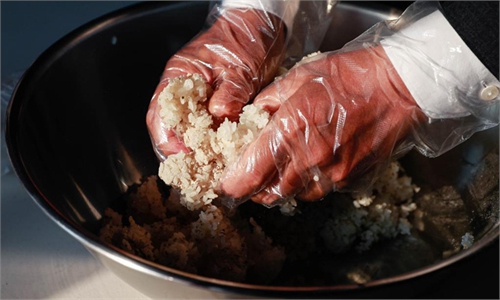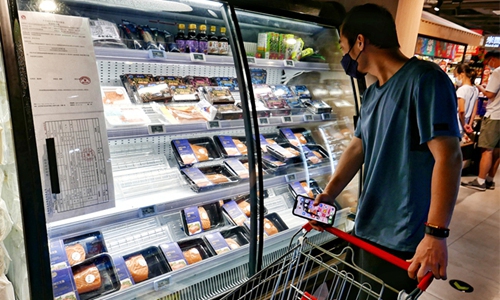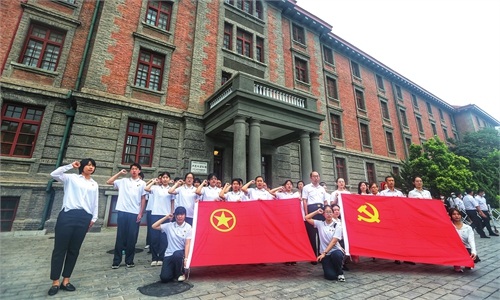ARTS / CULTURE & LEISURE
The wartime protection of the Palace Museum’s imperial collection
Guarding history
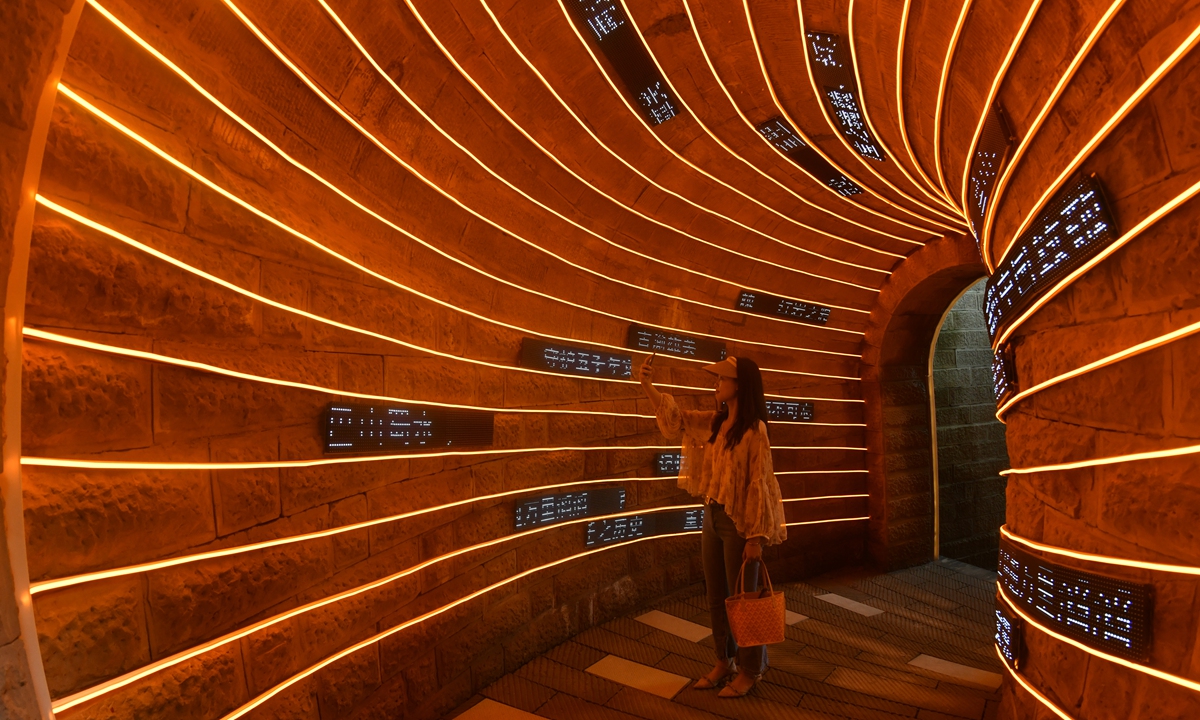
Visitors explore the Memorial Hall of the Palace Museum Collection's Evacuation to the South in Chongqing on June 11. Photo: IC
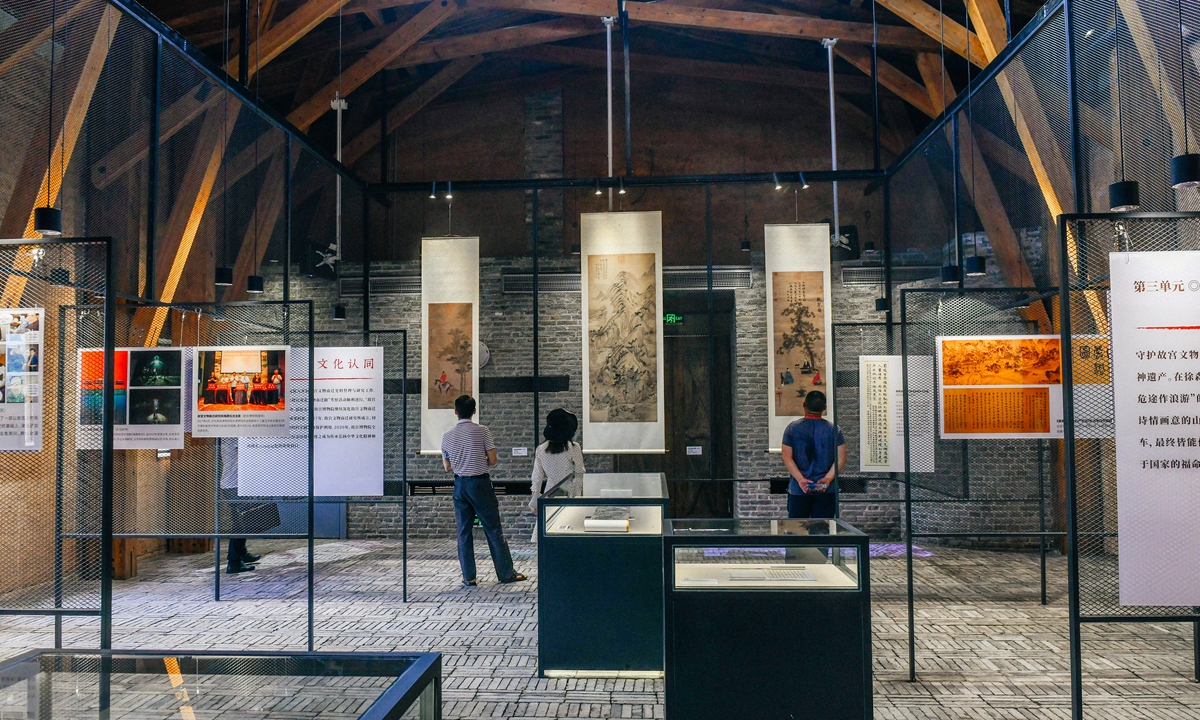
Visitors explore the Memorial Hall of the Palace Museum Collection's Evacuation to the South in Chongqingin on June 11. Photo: IC
During a time of war 90 years ago, as Chinese soldiers fought against Japanese invaders, a group of people did their duty and risked their lives to move ancient Chinese relics from Beijing to the south. This is the unprecedented relocation of the Palace Museum's collection to the south during the War of Resistance against Japanese Aggression (1931-45).
To celebrate the CPC centenary and China's Cultural and Natural Heritage Day, the Memorial Hall of the Palace Museum Collection's Evacuation to the South in Chongqing was opened in early June.
Entering the main hall of the Memorial Hall of the Palace Museum Collection's Evacuation to the South in Chongqing, many visitors were reading an introduction with a serious look on their faces.
"Facing a national disaster, everyone was prepared to fight and even sacrifice their lives, but those cultural relics carrying on our nation's history and spirit could not be destroyed. If even those relics could be lost, what on Earth were we fighting for?"
"I am very touched and grateful to those who went before because they spared no effort to protect our nation's roots. I believe they held the same belief that these priceless cultural relics should not be razed by the invaders but needed to be left for the next generation," Cao Qing, a 25-year-old visitor living in Chongqing, told the Global Times.
Qiu Ting, a tour guide at the Memorial Hall of the Palace Museum Collection's Evacuation to the South in Chongqing, told the Global Times that the Palace Museum finally picked Chongqing as the location for the memorial because the site was relatively intact.
The Memorial Hall of the Palace Museum Collection's Evacuation to the South in Chongqing was established to commemorate the feat that was the southward relocation of the Palace Museum's collection during the War of Resistance. It was renovated on the former site of the Andersen House. There are eight existing single buildings, including four municipal heritage buildings, four traditional-Wstyle buildings, and one cable car site, according to its official introduction.
Journey to the south
In 1931, after the September 18 Incident broke out, directors of the Palace Museum considered moving the collection to a safe site. In 1932, as the Japanese invasion into China expanded, the staff of the Palace Museum began to pack up the valuable artifacts, taking a year to finish the difficult work.
"A total of 13,427 boxes and 64 bags," Xu Wanling, director of the Institute for Research on the Palace Museum Collection's Evacuation to the South, told the Global Times.
"Packing was a tough job. We first checked some historical records and leaned how the delicate porcelains were delivered from Jingdezhen [where the royal porcelains were made] and also invited some old professional antique shop owners to train our staff," Xu said.
According to Xu, the staff who packed and moved the relics was hand-picked by the director of the museum's various departments and some police officers were appointed by the local police station to escort each batch of the collection.
Adding in the collections of the National Museum of Antiquities, the Summer Palace and the Imperial College, more than 19,000 boxes of cultural relics survived the war despite dangers such as bad weather, dangerous road conditions, bombings by Japanese forces and theft by bandits.
"That can be seen as a miracle," Yan Hongbin, deputy director of the Palace Museum said.
"I think the experience must have had a profound impact on their lives. Some of those who had spent most of their lives guarding the relics even took their families with them," added Xu.
In 1949, about 3,000 boxes of cultural relics were shipped to the island of Taiwan. Expert Liang Tingwei, who was an antique inspector at the Palace Museum and his wife went to the island with the relics he guarded while his second eldest son, Liang Kuangzhong, stayed in the Chinese mainland to guard the other relics that were scheduled to return to Beijing.
None of them knew that the separation would be the last time they met. The son would never see his parents again as they later passed away in Taiwan.
"The Chinese mainland and the island of Taiwan have always shared the same cultural roots and history, and the evacuation of the Palace Museum's collection stood witness to their emotional bonds," said Xu.
Inherited spirit
In 1935, 735 artifacts from the Palace Museum were sent to the UK for an exhibition.
"We even had some international cultural exchanges by displaying our national treasures overseas amid the turbulent war time, while in times of peace, we should take more opportunity to spread our culture overseas," Zhou Kao, a 36-year-old visitor, told the Global Times.
Zhou said new exhibits combining visual art technologies, like a new media works about the Sanxingdui Ruins, are very creative, and that Chinese culture bloggers like YouTube celebrity Li Ziqi can help introduce Chinese culture to the world.
"Strengthening cultural exchanges between domestic and foreign institutions as well as improving the ability of exhibition planners to prepare exhibitions can help more Chinese relics shine on the world stage," Xu said.

